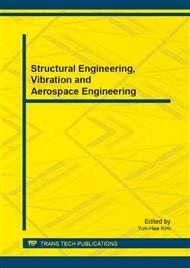p.155
p.163
p.169
p.174
p.179
p.183
p.188
p.195
p.200
Feature Extraction of Diesel Engine Wear Fault Based on Local Tangent Space Alignment
Abstract:
In view of diesel engine wear fault feature extraction, feature extraction of diesel engine wear fault based on Local Tangent Space Alignment (LTSA) was put forward. This paper analyzes LTSA algorithm which reveals the characteristics of manifold learning. Take diesel engine fault diagnosis test rig as example, vibration information was got through imitating different kinds of diesel engine wear fault. LTSA algorithm was applied for dimensionality reduction. LTSA algorithm’s classification performance was compared in accordance with recognition rate of multi-class SVM. The experimental results show that LTSA has high recognition rate and is a very effective feature extraction method for diesel engine wear fault.
Info:
Periodical:
Pages:
179-182
Citation:
Online since:
December 2013
Authors:
Price:
Сopyright:
© 2014 Trans Tech Publications Ltd. All Rights Reserved
Share:
Citation:


